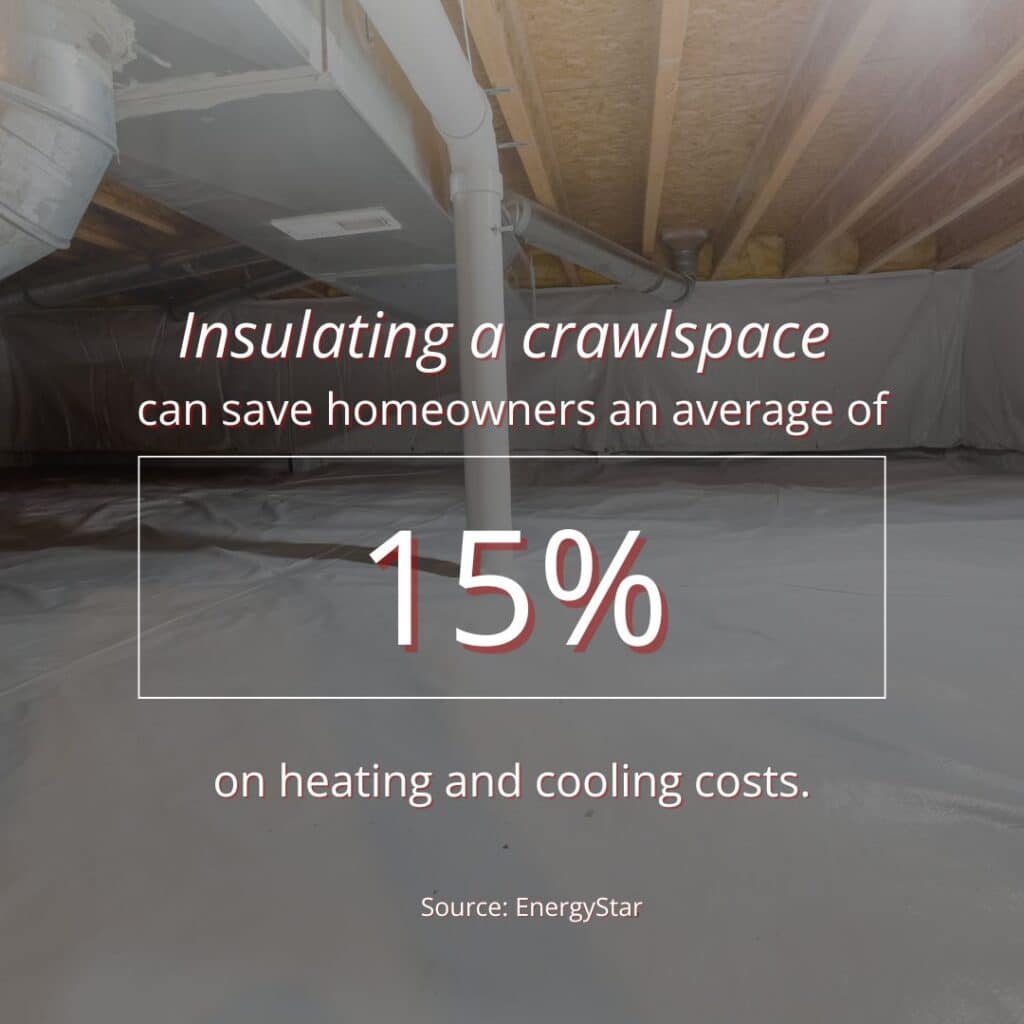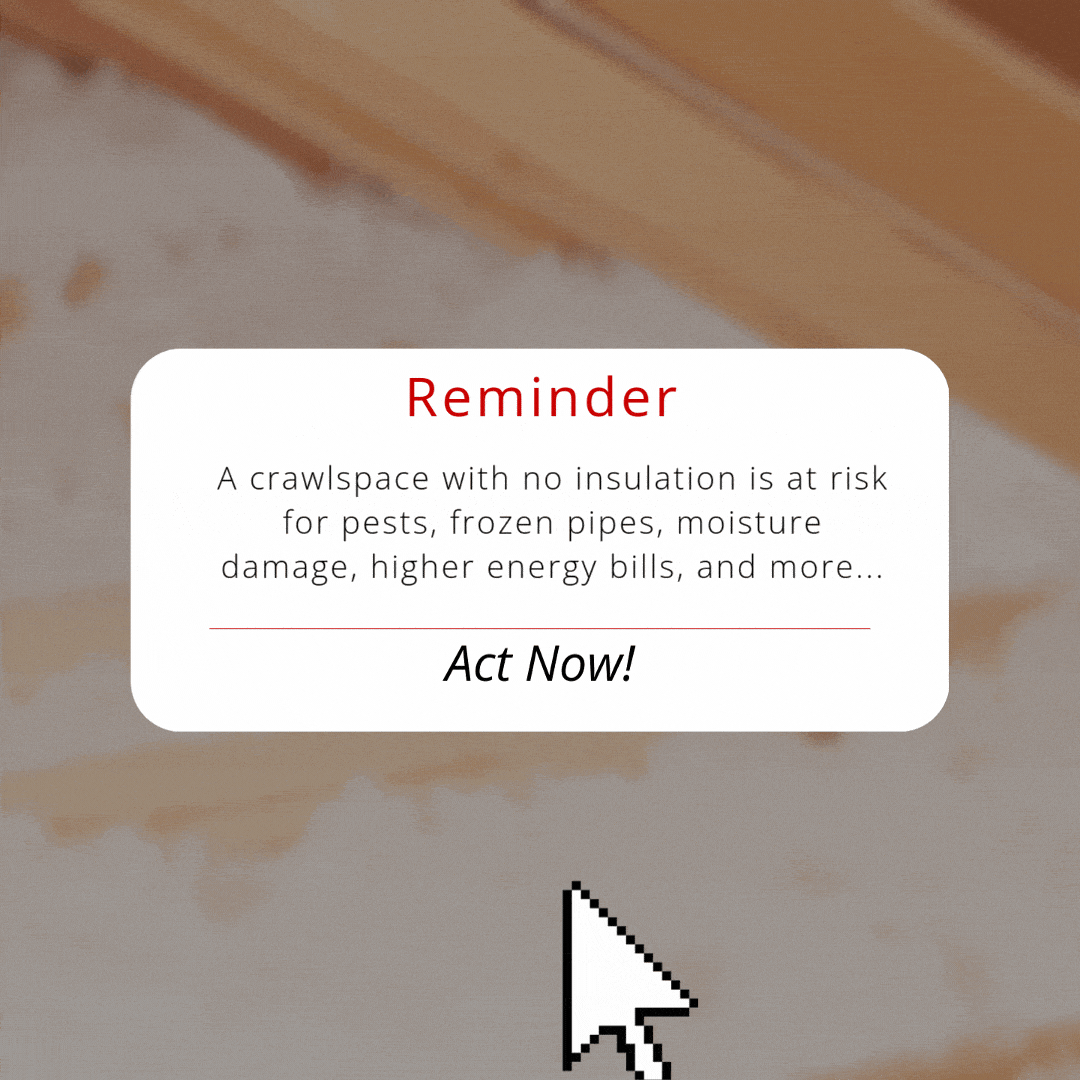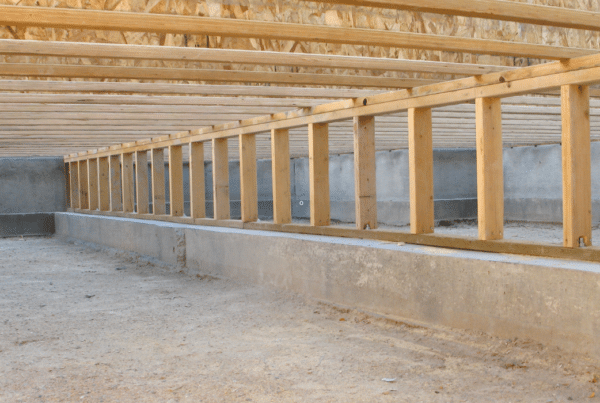Your crawl space might not be top of mind, but it plays a bigger role in your home’s comfort and safety than you might think. Without proper insulation, a crawl space can cause a range of problems, like cold floors, rising energy bills, or even more serious concerns.
In short, insulating your crawl space isn’t just about staying warm in the winter or cool in the summer—it helps protect your home from costly repairs down the road. This article breaks down what happens if your crawl space has no insulation, what signs to watch for, and how to make the best choice for your home.
Why Crawl Space Insulation Matters
Insulation in your crawl space helps create a barrier between your living space and the outside environment.
Without it, you risk temperature fluctuations, moisture buildup, and structural deterioration. Insulation serves several important purposes:
- Keeps indoor temperatures stable throughout the year
- Reduces moisture that can lead to mold and wood rot
- Helps protect the foundation from damage caused by humidity and temperature swings
- Lowers heating and cooling costs
- Prevents pests from easily accessing your home
When this protective layer is missing, your crawl space can quickly become a source of ongoing maintenance issues and unexpected expenses.

Problems Caused by No Crawl Space Insulation
Failing to insulate your crawl space can result in various problems that impact both your home and your wallet. Some of the most common issues include:
- Higher energy bills: Heating and cooling systems work harder when outdoor air infiltrates through the floor.
- Moisture-related damage: Excess humidity can lead to mold, mildew, and structural wood rot.
- Cold or uneven floors: Rooms above an uninsulated crawl space often feel drafty and uncomfortable.
- Risk of frozen pipes: Without insulation, plumbing in your crawl space is more vulnerable to freezing and bursting in colder months.
- Pest infestations: Rodents and insects seek out warm, damp spaces and can enter through unprotected areas.
Over time, these problems can worsen, leading to larger repairs and more significant safety concerns.
Signs Your Crawl Space Needs Insulation
Wondering if your crawl space insulation is missing or failing? Watch for these common signs:
- Cold floors, especially in rooms above the crawl space
- Musty odors that persist even after cleaning
- Sudden increases in your heating or cooling costs
- Visible moisture, condensation, or mold growth beneath the house
- Evidence of pests, such as droppings or gnawed materials
Catching these issues early can help you avoid bigger problems down the line.
Best Insulation Options for Crawl Spaces in Ohio
Ohio’s climate brings cold winters and humid summers, making moisture control and thermal protection essential. Choosing the right insulation depends on your crawl space type and existing conditions. Top options include:
- Spray foam insulation: Offers excellent air sealing and moisture resistance, ideal for sealing gaps and creating a thermal barrier.
- Rigid foam board: Provides strong moisture resistance and is effective on crawl space walls, especially in sealed systems.
- Fiberglass batts: Common but less ideal for damp environments unless paired with a proper vapor barrier.
Sealed crawl spaces typically benefit most from spray foam or rigid foam insulation. Vented crawl spaces may require additional moisture control measures, such as vapor barriers, to prevent water intrusion.

Other Maintenance for a Healthy Crawl Space
Insulation alone isn’t enough to keep your crawl space in good shape. Regular maintenance and additional protective measures can prevent costly damage and improve indoor air quality. Consider:
- Installing a vapor barrier to block ground moisture
- Sealing vents and cracks to reduce air leaks and pest entry
- Adding a dehumidifier to maintain proper humidity levels
- Scheduling annual inspections to catch developing issues early
Together, these steps create a healthier, more energy-efficient home environment.
When to Call a Professional
If you notice moisture problems, sagging insulation, pests, or signs of structural damage, it’s best to contact a professional.
While DIY insulation projects may seem cost-effective, they often overlook underlying issues like hidden moisture or ventilation problems. An expert can provide a thorough assessment and recommend the right solutions to address both the symptoms and root causes.
Delaying necessary repairs can lead to bigger problems, including compromised structural integrity or extensive mold growth. Professional help ensures your crawl space is properly insulated and protected for the long term.
Conclusion
An uninsulated crawl space can cause higher energy costs, structural damage, and uncomfortable living conditions. Investing in proper insulation, combined with regular maintenance, protects your home and helps you save money over time.
If you’re unsure about the condition of your crawl space, Buckeye Basement Solutions has experts to offer complete evaluations and customized solutions. Reach out today to schedule an inspection and take the first step toward a healthier home.



